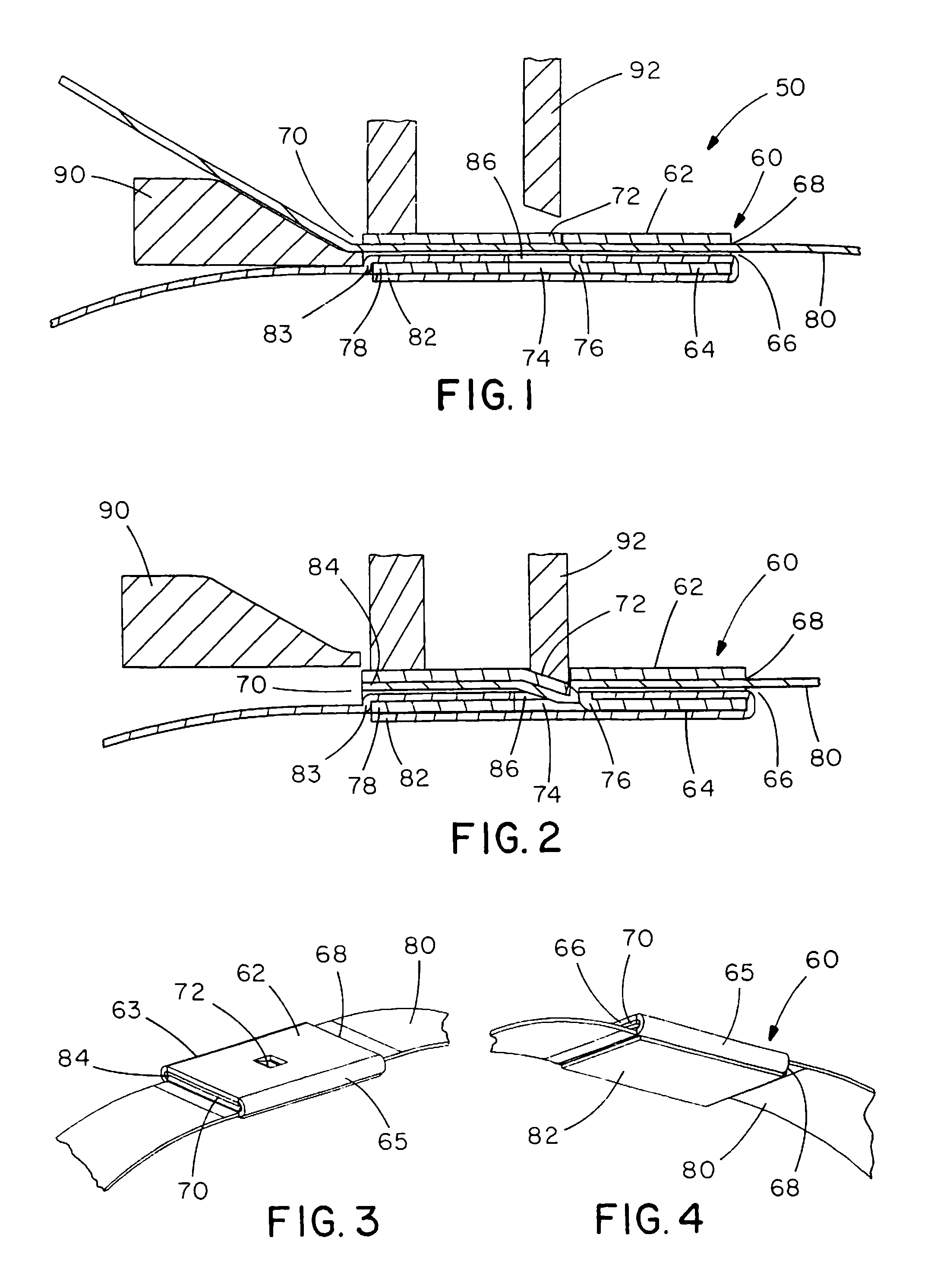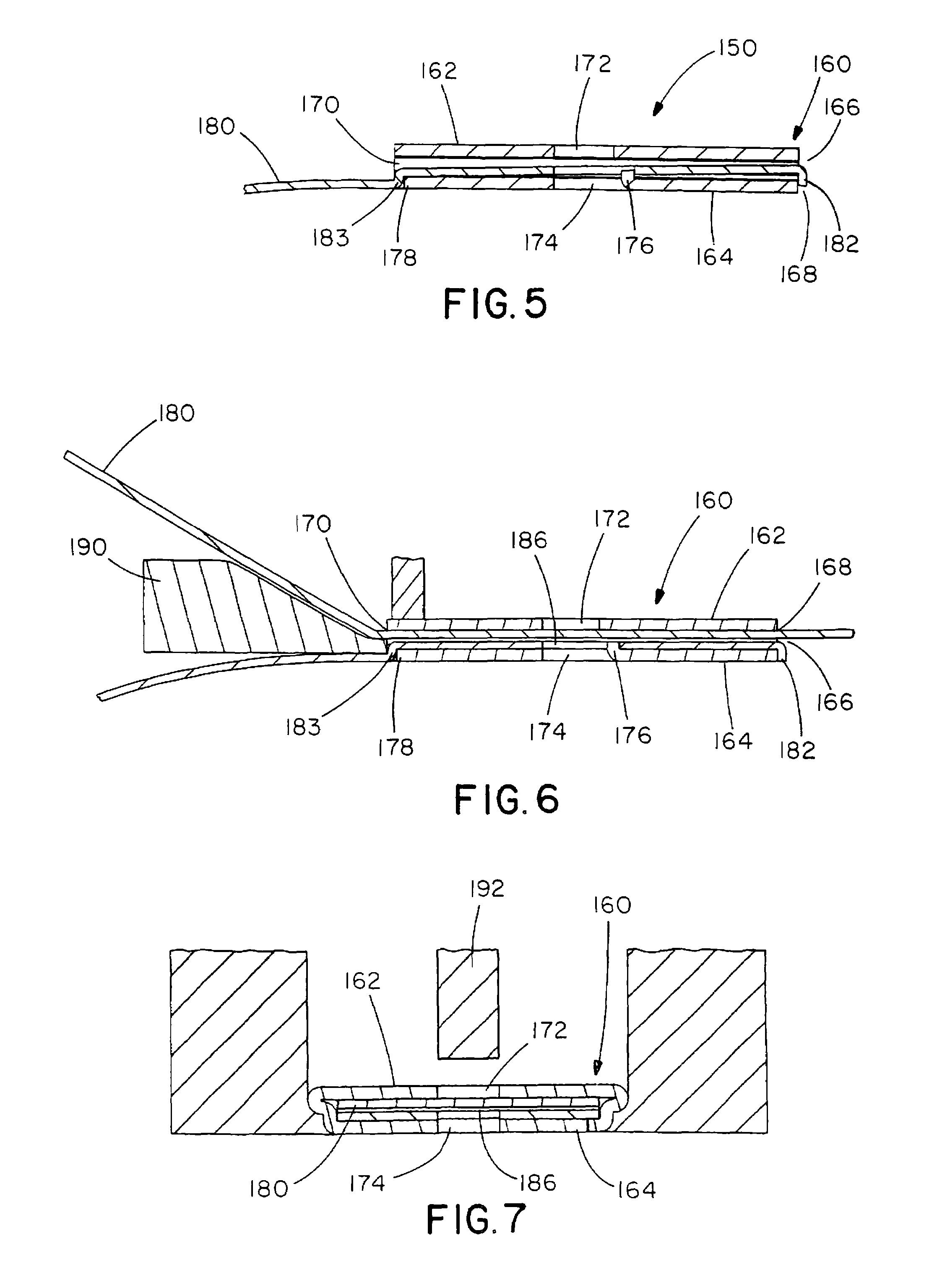Displacement lock MLT
a technology of locking ties and locking clips, which is applied in the direction of hose connections, bundling articles, other domestic articles, etc., and can solve problems such as the release of the tightened strap
- Summary
- Abstract
- Description
- Claims
- Application Information
AI Technical Summary
Benefits of technology
Problems solved by technology
Method used
Image
Examples
first embodiment
[0046]the metal locking tie of the present invention is illustrated in FIGS. 1-4. The metal locking tie 50 includes a metallic locking head 60 and an elongate metallic strap 80 with a first end 82 and a second end 84. The head 60 includes a top wall 62, a bottom wall 64, sides 63, 65 and a strap passageway 66 with an entrance end 68 and an exit end 70. The top wall 62 of the head 60 includes a top tab 72 positioned at the center of the head. As will be discussed below, the top tab 72 bends downward towards the strap passageway 66 in the head 60 when a locking punch 92 engages the top tab 72. The bottom wall 64 of the head 60 includes an aperture 74 positioned at the center of the head 60. The bottom wall 64 also includes a bottom tab 76 positioned adjacent to the aperture 74. The bottom tab 76 extends upwards towards the strap passageway 66.
[0047]As illustrated in FIGS. 1 and 2, the first end 82 of the strap 80 is positioned along the bottom wall 64 of the head 60. The strap 80 wrap...
second embodiment
[0052]As shown in FIGS. 5-11, the first end 182 of the strap 180 engages the bottom wall 164 of the locking head 160. The first end 182 of the strap 180 is bent up to create a friction resistance with the second end 184 of the strap 180 when the second end 184 enters the strap passageway 166 in the head. In another variation of the second embodiment, as illustrated in FIGS. 12-15, the first end 182 of the strap 180 may be positioned along the bottom wall 164 of the head 160 such that the strap 180 wraps around the entrance end 168 of the strap passageway 166 and extends through the strap passageway 166.
[0053]Once the strap 180 has been wrapped around the objects to be held or bundled, the second end 184 of the strap 180 is inserted in the entrance end 168 of the strap passageway 166 and through the strap passageway 166. The metal locking tie tool tensions the strap 180 and the tool is activated (see FIGS. 8-9 and 12-13) to secure the strap 180 to the head 160 and to cut the strap 18...
PUM
 Login to View More
Login to View More Abstract
Description
Claims
Application Information
 Login to View More
Login to View More - R&D
- Intellectual Property
- Life Sciences
- Materials
- Tech Scout
- Unparalleled Data Quality
- Higher Quality Content
- 60% Fewer Hallucinations
Browse by: Latest US Patents, China's latest patents, Technical Efficacy Thesaurus, Application Domain, Technology Topic, Popular Technical Reports.
© 2025 PatSnap. All rights reserved.Legal|Privacy policy|Modern Slavery Act Transparency Statement|Sitemap|About US| Contact US: help@patsnap.com



